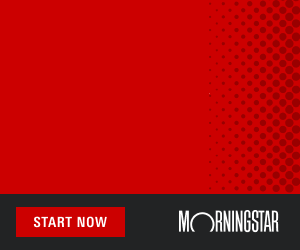While the disconnect between markets and the real economy has widened further, there is no guarantee that it will narrow, especially with central banks acting as the buyer of last resort. Yet the risk of an extended run of corporate insolvencies remains. In this environment, high-quality income generation is the key, together with the flexibility to move quickly as new opportunities and threats emerge.
The strong risk rally in markets in recent months has opened up a broad disconnect between markets and the weak real economy. While this condition suggests caution, it’s possible it persists, even in the absence of a breakthrough on the vaccine front.
First, markets are averages, and there are both winners and losers from the pandemic. While top-down caution is warranted, combining this with bottom-up conviction on sectors and companies is required. Second, policymakers continue to support markets, even if the economic benefits are questionable. In particular, central banks are both financing market trades at very cheap rates and acting as the buyer of last resort – a role they don’t play in the real economy.
The uniqueness of this economic shock, and the intersection of health, business and political concerns, means we can be less confident than usual about the shape of the economic recovery. However, while markets may remain resilient in the face of uncertainty, we need to ensure portfolios are prepared for a range of possible outcomes.
Corporate bonds remain attractive
Focusing on high-quality income generation is the starting point. Corporate bonds remain attractive for this purpose. While absolute levels of yields are low, and spreads on corporates have now ‘normalised’ after the extreme widening of March, corporate spreads to government bonds are nonetheless at about historic averages. Not only does this make them relatively attractive to government bonds, for which term premium is suppressed, it also suggests that sourcing quality income is more prudent that chasing further spread compression. Additionally, since the return to credit is driven by solvency rather than growth, a slow and uneven recovery will be OK for corporate bonds so long as balance sheets are in good shape.
We continue to believe Australian credit is a sound place to invest, as overwhelmingly Australian corporate issuers are resilient to the headwinds of COVID-19, and the quality of the market remains high.
Our portfolio position
As spreads have compressed, we have downgraded our view on corporate bonds compared to a few months ago, and accordingly have trimmed our exposures a little. Mostly, however, we have rotated exposures to into other parts of the opportunity set that offer better value. For example, within the broad global opportunity set, Asian credit is attractive versus developed country high yield, and US securitised debt is more appealing than US corporate debt.
Our focus from a security selection perspective has firstly been evaluating whether companies have sufficient balance sheet liquidity and flexibility to survive a prolonged fall in revenue independent of government support, and secondly making sure we are adequately compensated for uncertainty.
Within Australian investment grade credit, we have rotated from banks to non-financials. Banks have led the spread re-pricing in recent months, partly driven by a lack of supply, with the RBA’s Term Funding Facility providing a cheaper source of funding than wholesale debt. However, we think the extent of loss provision likely to be required for banks is under priced, while non-financials have lagged and appear reasonably cheap, including the infrastructure, transport and utilities sectors.
Our second key portfolio construction focus is on seeking effective diversification. Our interest rate exposure is a key part of this. Our interest rate exposure is longer than benchmark and focused on Australia and the US, where yields are relatively elevated and there is still more scope for central banks to ease further.
Given the likelihood that returns to duration will be reasonably limited under most scenarios, we have also sought further diversification within our credit allocations. This includes adding exposure to households (via RMBS) rather than simply corporates, to emerging markets rather than simply developed economies, and more recently, to private rather than simply public debt.
We’ve also made increasing use of relative value positions to add value in a low-risk fashion, with returns to market betas likely constrained. And finally, while recent market moves have been subdued, we are thinking about how to prepare the portfolio for future volatility.
The risk most concerning to us over the next year is a more meaningful period of corporate insolvency, which would cascade through both the real economy and markets. We are monitoring corporate profitability and balance sheets very closely for this. The scenario that is most talked about is one where bond yields spike higher, driven by inflation concerns. We think this is extremely unlikely, but buying some insurance against it makes sense.
In this uncertain environment, we are confident the portfolio is well positioned to deliver superior reward for risk outcomes. Our focus remains on positioning for quality income generation across a broad opportunity set, keeping the portfolio well diversified and being flexible to both capture opportunities and manage risk.
For more on the Schroder Fixed Income Fund, click here.




